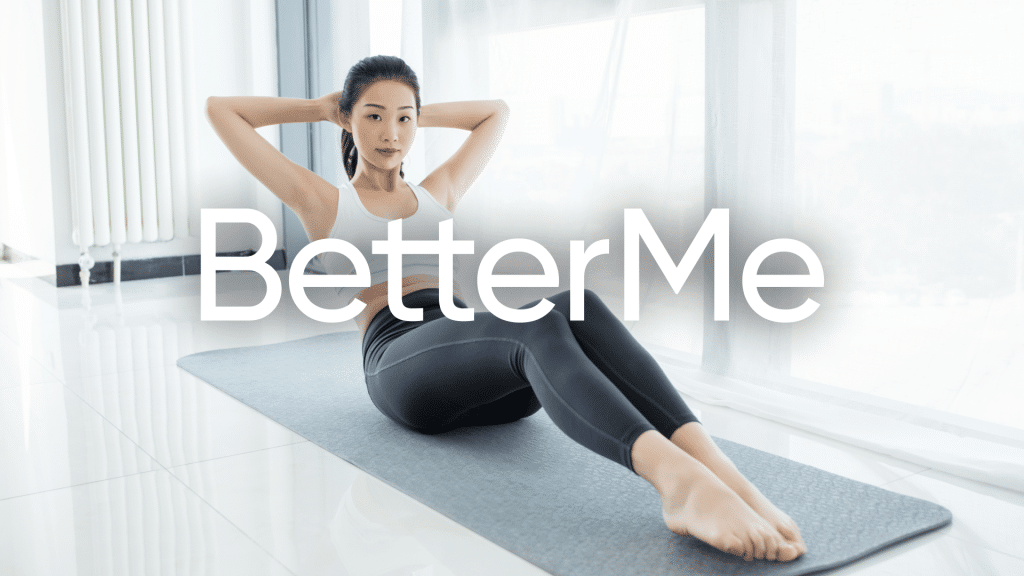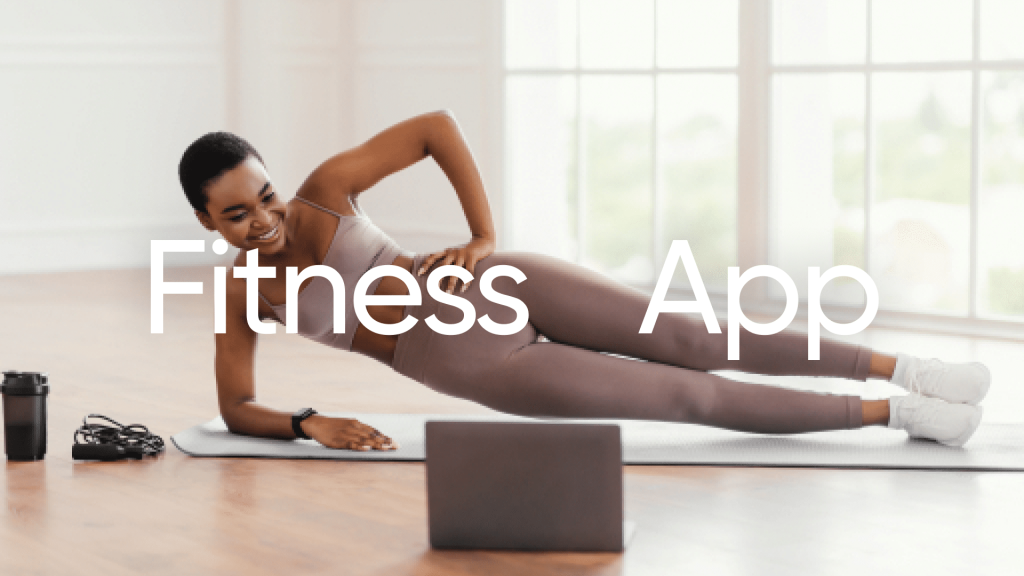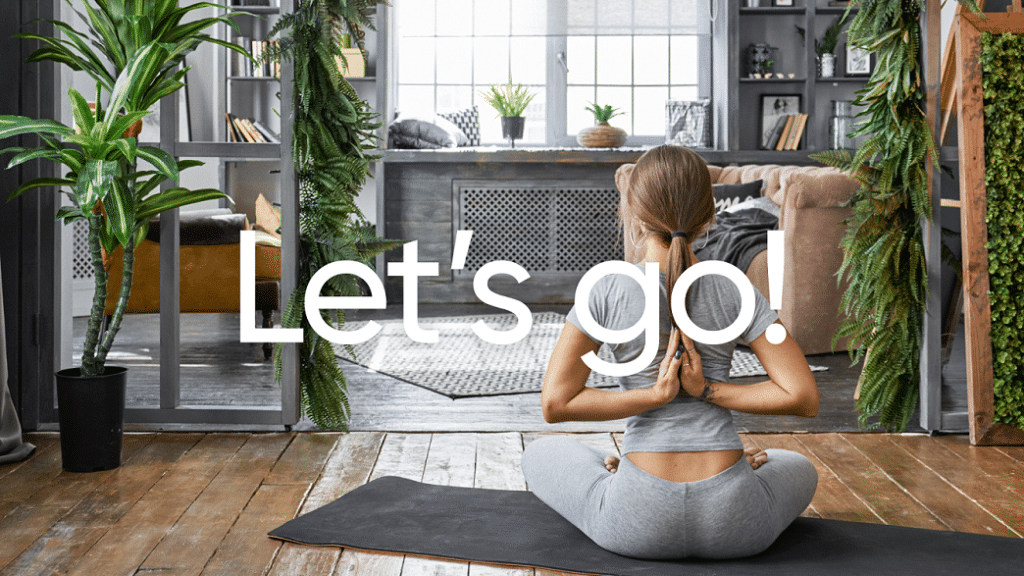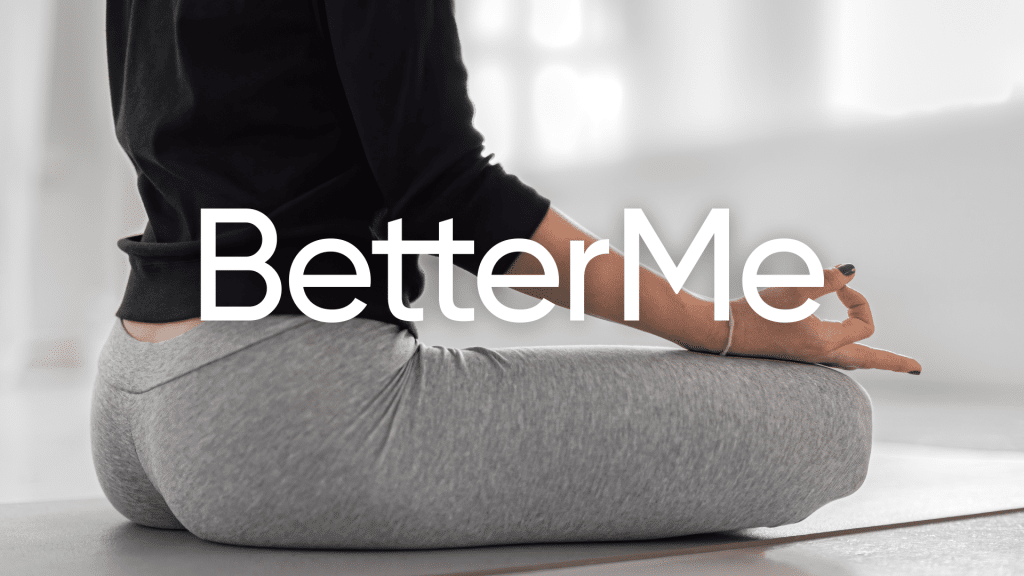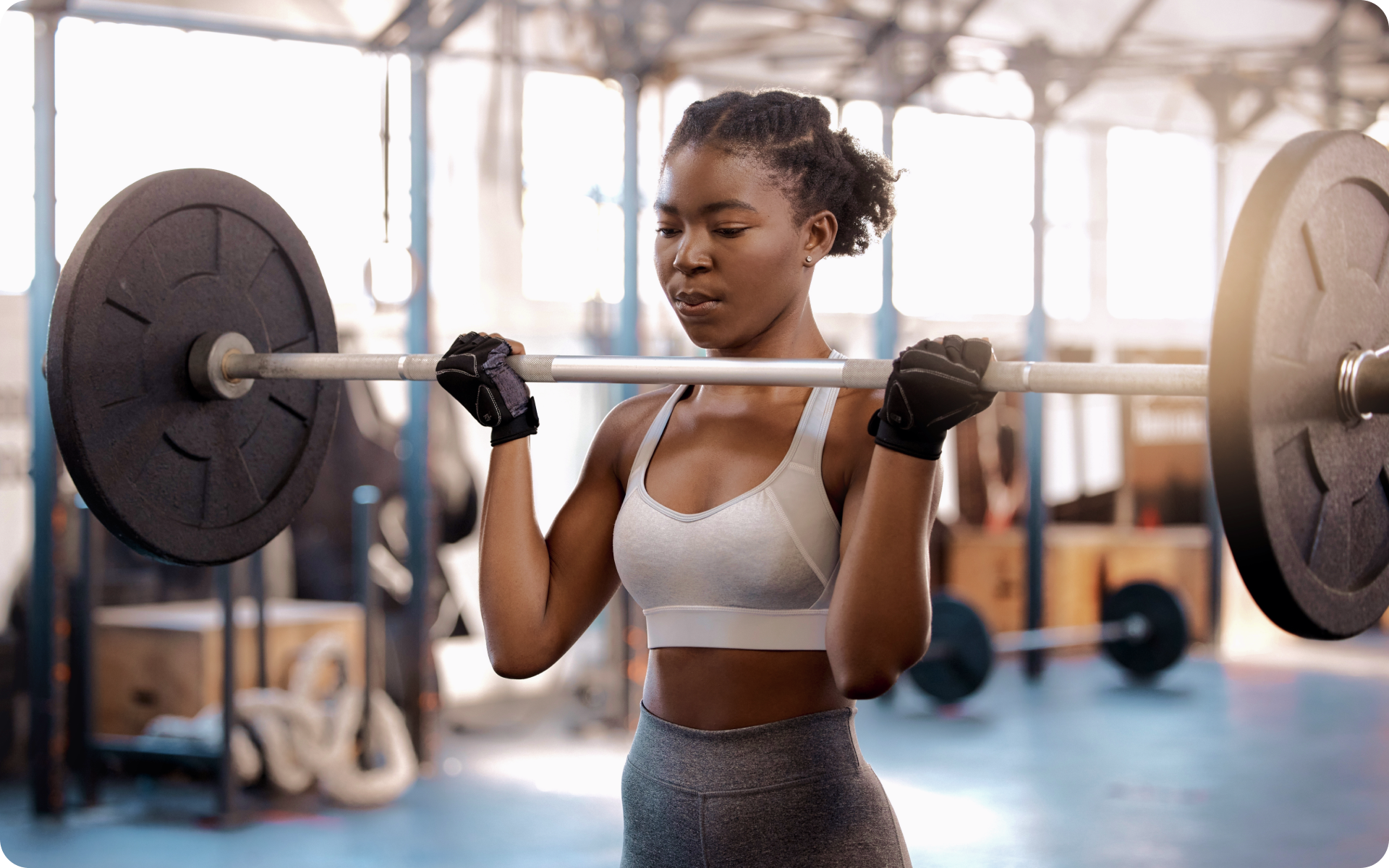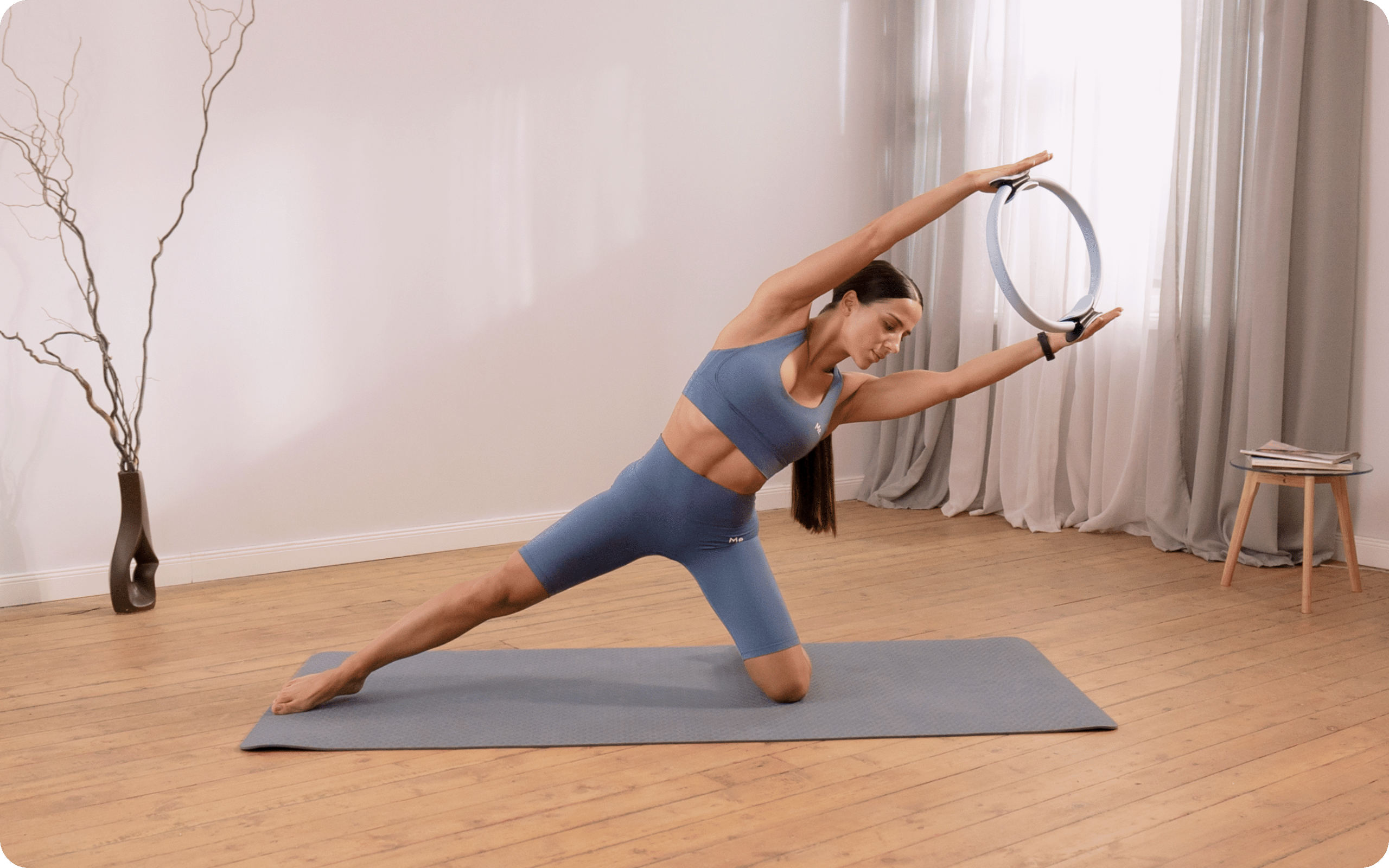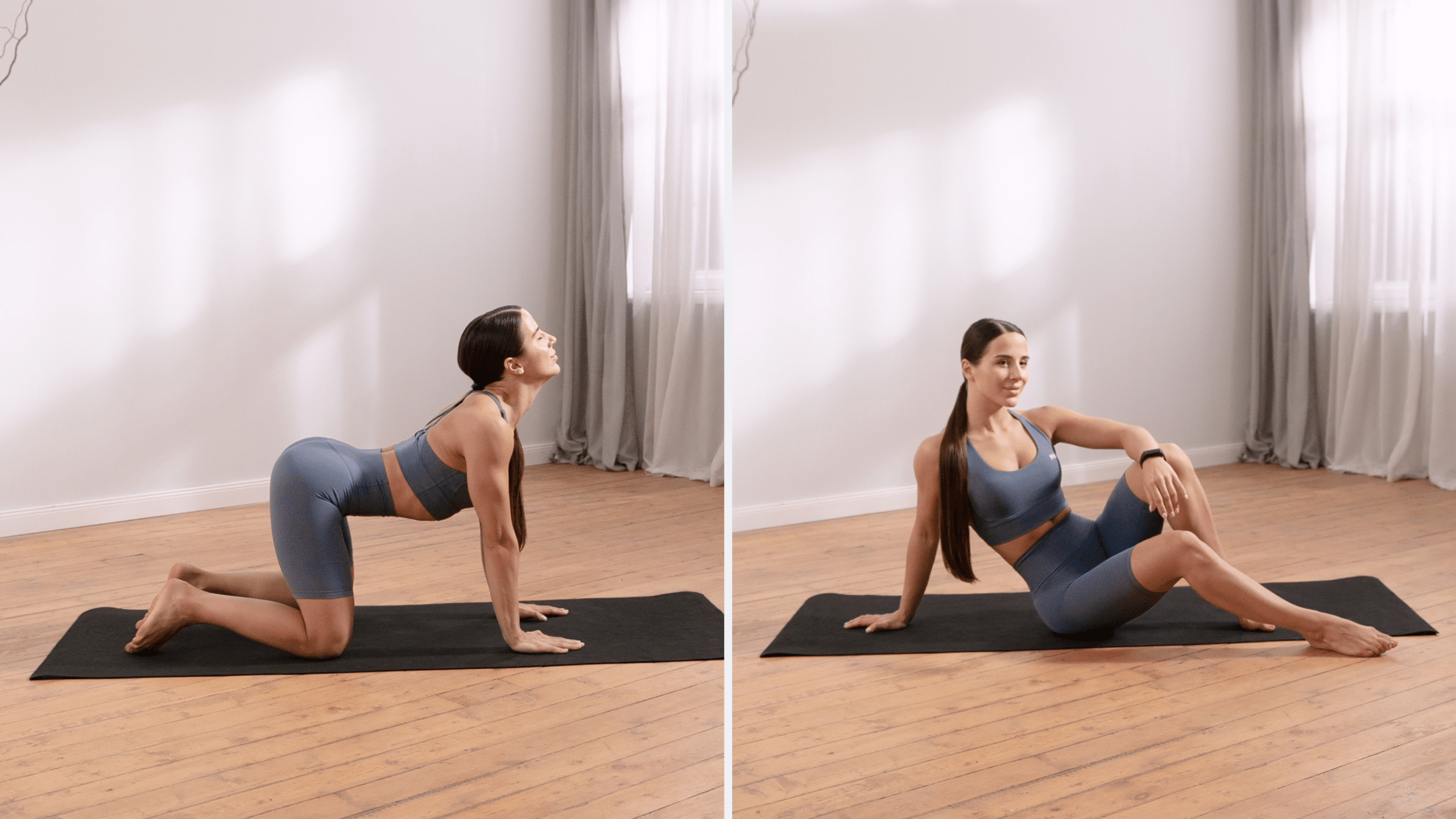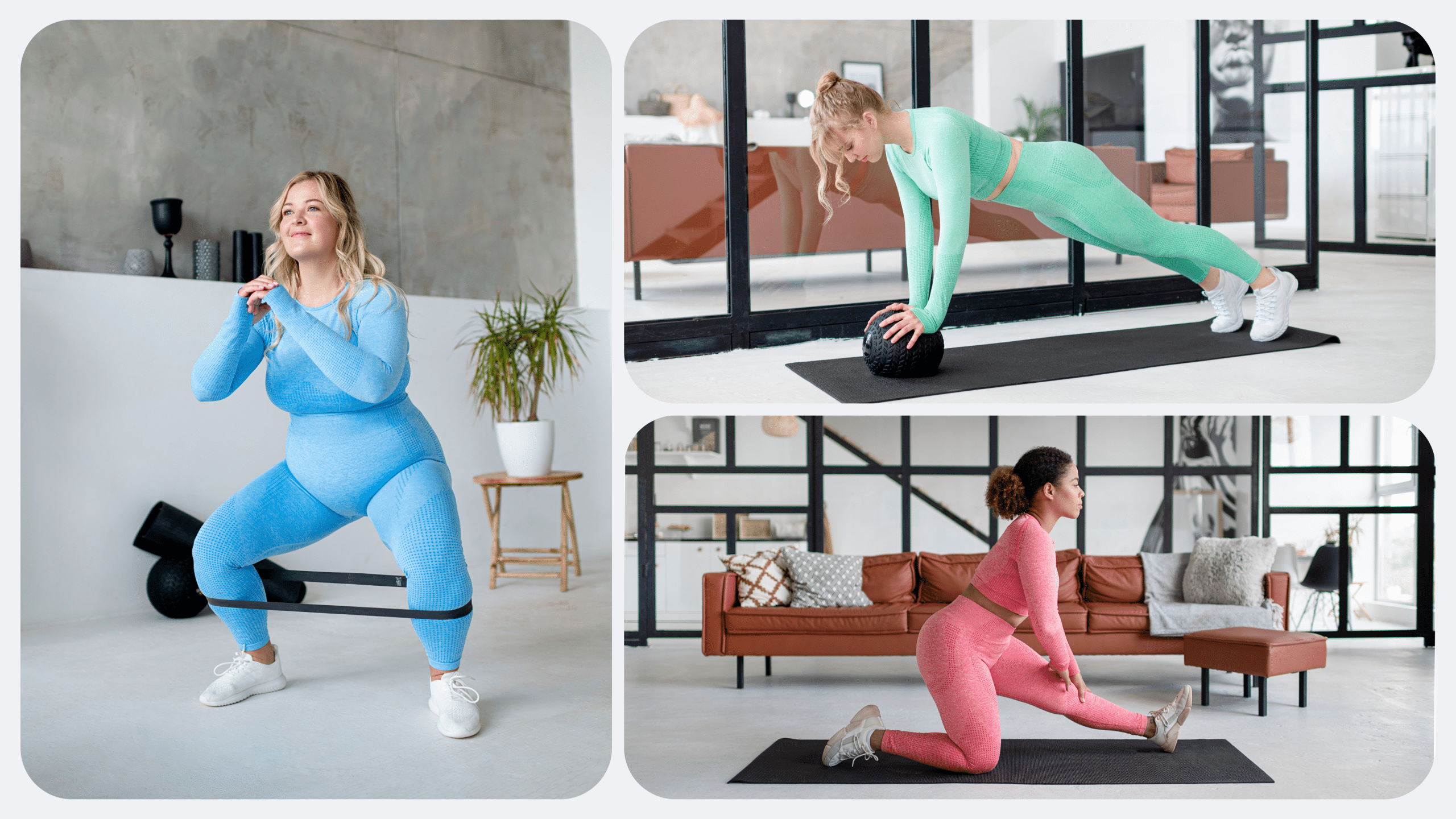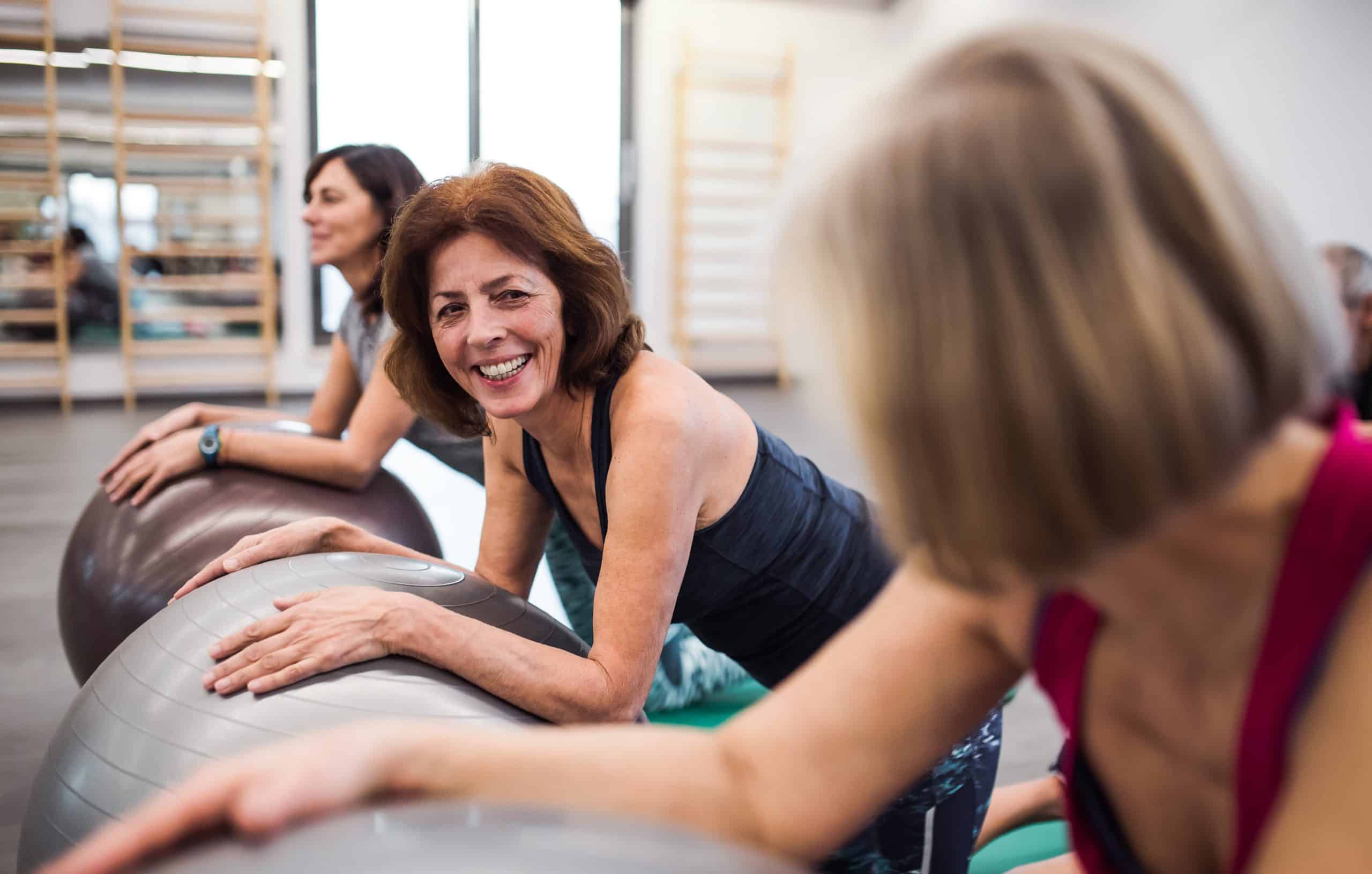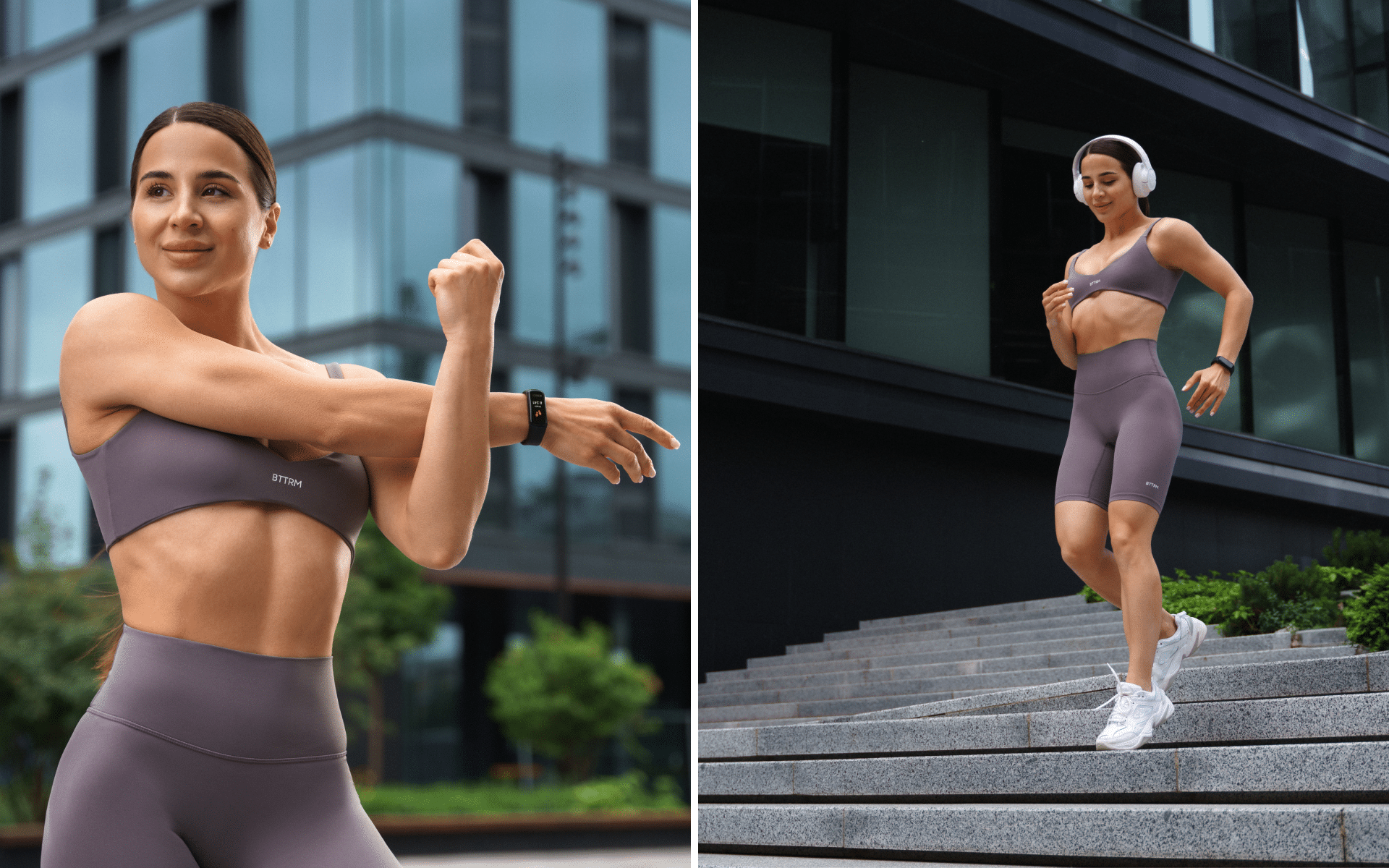Posture impacts our lives more than we think. Think of it, we are born with the ability to control our posture. Whether we want to sit, walk upright or lie down straight, this is purely an act of our will. Oddly enough, most people lose this ability over time and one day can find themselves subject to poor posture without even realizing it. Poor posture can cause many long-term problems that affect not only your physical but also your mental well-being. Thankfully, you can learn to change your posture. The methods described below will help you acquire good posture. Read about importance of good posture below!
Get your personalized
meal plan!
What Is The Importance Of Good Posture?
Posture is key to efficient functioning of the body (13). Having good posture while standing or sitting can help you in the following ways:
Reduces Back And Neck Pain
Good posture is the proper alignment of your spine, head, and neck when you are standing or sitting. This avoids undue strain on your back muscles which can result in aches or spasms (13).
When you have correct posture while standing, the weight of your upper body is evenly distributed between the front and rear portions of each foot while walking. This then helps prevent extra pressure on only one leg while walking or running, which is beneficial for your leg muscles and bones.
While seated, good posture prevents too much weight on only one side of your buttocks and thighs. This is good for the muscles and your blood circulation as well.
Helps Prevent Injury
By keeping the spine in a neutral position, good posture helps prevent injury to the lower back, neck, and shoulders. Therefore, susceptibility to injuries is reduced while engaged in sports or heavy lifting (11).
Helps Keep The Right Shape Of Your Body
Proper posture helps keep your body in the right shape. When you stand or sit upright, your abdominal muscles tend to contract, which keeps any one of your body parts from sticking out and putting on too much weight around the belly area. Good posture will help you achieve and maintain a well-toned and healthy body.
Prevents Back Disorders
If you maintain the correct posture, it can prevent future back problems (1). If you already have a back disorder or injury, good posture will prevent further aggravation.
Reduces Strain On Joints
The spine is an integral part of the body’s structure. When there is a bad posture, the weight is not equally distributed on all parts of the spine. This can lead to unnecessary strain and wear and tear of your back muscles and joints which can result in chronic pain, disability, and in some cases early death (2).
Increases Lung Capacity
If you maintain good posture while breathing in and out, it helps expand your lungs to their maximum capacity. This is especially useful to athletes and singers who need to maximize their lung function.
When you have good posture, your lungs are placed higher in the thorax cavity compared to when there’s poor posture. This means that your diaphragm will contract more efficiently which will allow your lungs to expand to their maximum (7).
Read More: Best Back Workouts With Dumbbells You Can Do Anywhere
Reduces Back Pains During Pregnancy
Good posture allows for better breathing and reduces back pains during pregnancy (9). The weight of the uterus and baby will be distributed evenly, resulting in less strain on your spine. Also, you’ll have improved blood flow to both mother and baby, which is important for a healthy delivery.
Makes You Look And Feel Attractive
People with good posture have a confident appearance. They stand tall and balance their body weight on both feet, making them look more attractive. Good posture also improves your self-esteem as it allows you to carry yourself well in front of people (5).
Improves Digestion And Organs Function
Poor posture makes it hard to digest food (8). When you have good posture, the muscles that support your stomach and intestines are contracted, improving their function. The digestive and intestinal organs work more efficiently than when you stand or sit in a poor posture. When the organs work normally, it reduces one’s susceptibility to certain gastrointestinal disorders.
Fewer Headaches
When you have good posture, the muscles of your neck are relaxed, preventing headaches. Also, your head is balanced on top of your spine and this avoids any extra pressure on certain parts of the skull which can result in headache (3).
Helps You Stay Alert And Focused
Good posture helps keep blood flowing to all parts of the body equally. This is important for your brain to function at its best (12). When the flow of blood is constant, you’ll have more alertness and focus, which are good traits that employers look for in employees.
Increased Energy Levels
Chronic fatigue and lethargy can be signs of bad body posture and an unhealthy body (10). When you maintain good posture, your muscles and joints work efficiently, boosting your energy levels without the use of caffeine or other stimulants.
Better Form For Workouts
By using the correct form for your exercises you can do amazing things for your body. If you have good posture, it will naturally lead to the correct form, making exercise much more effective in toning muscles and losing weight.
Bad Posture Can Lead To These Problems
When you’re constantly slouching, hunching, or bending, you expose yourself to these problems:
- Chronic back pain
- Stiffness in the neck and shoulders
- Headaches especially at the back of the head and base of the skull
- Stress on lower back muscles causing soreness around the lumbar spine
- Tight hamstrings which lead to reduced blood flow
- Reduced lung capacity and difficulty in breathing which is caused by the compression of your rib cage.
What Causes Bad Posture?
Bad posture isn’t always a result of habit. Some of the conditions or circumstances that can cause bad posture are:
- Sitting for long hours
- Hunching over keyboards and other work surfaces all day long
- Poor range of motion due to inflexible muscles
- Weak core muscles
If you wish to free yourself from all the extra pounds that have been weighting you down for way too long, start using the BetterMe app and overhaul your entire life!
How To Achieve Good Posture
According to Harvard Health, good posture means (14):
- Chin parallel to the floor
- Even shoulders and back
- A neutral spine that’s not flexed or arched to overemphasize the curve in the lower back
- Arms hanging close to your body
- Weight equally distributed on both feet
- Feet pointing straight ahead and knees not flexed too much or locked
- Abdominal muscles contracted and buttock muscles engaged
While seated, good posture means:
- Chin parallel to the floor
- Neck straight with the head balanced on top of spine
- Shoulders relaxed but back and chest lifted
- Back at a 90° angle to your thighs
- Hips higher than your knees
- Both knees at even height
- Knees and feet pointing straight ahead
The first step to achieving good posture is being aware of it and how it affects your body. The next step is to make a conscious effort of correcting your posture during the day.
Exercises For Good Posture
Good posture is not just about sitting or standing in the correct position. You must engage your muscles to hold your body in that position. The following are several muscle-building exercises for good posture:
Resistance Band Pull-Aparts
- Stand with feet hip-width apart and knees slightly bent.
- Place a resistance band above the head with elbows wide and palms facing down.
- Pull elbows back until they’re even with your body as you squeeze shoulder blades together. Pause for a count of two before returning to the starting position.
- Repeat for three sets of 15 reps each.
Sitting Wall Slides
- Sit tall with your back against the wall and feet hip-width apart in front of you.
- Place a resistance band around your forearms just above your elbows and while keeping your elbows against the wall, press your palms together.
- Contracting abs and squeezing shoulder blades, slide arms up until they’re fully extended overhead then return to the starting position.
- Repeat for three sets of 15 reps each.
Glute Bridges
- Lie faceup with knees bent and feet hip-width apart, about a foot from your butt.
- Press heels into the floor as you contract glutes to lift hips towards the ceiling until your body forms a straight line from shoulders to knees.
- Pause for a count of two then lower back down to starting position.
- Repeat for three sets of 15 reps each.
Chest And Triceps Press In Plank Position
- Start in a high plank position with your hands under your shoulders and feet hip-width apart.
- Keeping core tight, lift the right arm off the floor and extend it straight up towards the ceiling, pause for a count of two before lowering back to starting position.
- Repeat with your left arm. Continue alternating for three sets of 15 reps each arm.
Russian Twists
- Sit on the floor with knees bent and feet about a foot from your butt
- Holding a medicine ball, extend arms straight out in front of you at chest height
- Keeping your hips square to the floor, contract abs as you twist your torso as far as possible to one side then repeat on the other side.
- Continue alternating for three sets of 15 reps each.
Read More: Pilates For Back Pain: Effective Low-Impact Exercises Your Back Will Thank You For
Other Ways Of Improving Posture
Aside from doing specific posture improving exercises, here are a few other things you can do to improve your posture:
Strengthen Your Core Through Weight Lifting
A strong core is essential to good posture. To improve your core strength, incorporate more resistance training into your workout routine (4). Not only will the muscles surrounding your spine get stronger, but your back itself will also be more stable.
Balance Your Body During Everyday Activities
Doing anything during the day that involves an imbalance of weight on one side of your body makes it harder to achieve good posture overall. Balancing your body includes not only standing with both feet on the floor but also picking something up while balancing it on just one side of your body then the other, just as you would when carrying groceries in each arm or bringing a tray to your table at a restaurant.
Taking Frequent Breaks From Static Tasks
Standing or sitting in the same position for too long will stiffen your muscles and make it harder to achieve good posture. To avoid this, take frequent breaks during static tasks like watching television, using the computer, or working on a project at home by standing up once every half hour to stretch your legs, back, and arms. If possible, get up and move around every half hour.
Improve Your Range Of Motion Using Dynamic Stretches
Dynamic stretches like walking lunges and arm circles will improve your overall range of motion, making it easier to maintain good posture. They’ll also help loosen tight muscles and increase blood flow to those areas, which is beneficial for both the muscles and skin surrounding them (6).
Practice Daily
Like most things, mastering good posture takes practice. Keep working at it every day and soon you’ll find that maintaining good posture has become second nature.
Yanking yourself back in shape has never been so easy with our game-changing fitness app! Start transforming your life with BetterMe!
The Bottom Line
Posture is a way of positioning your body during any given activity. Poor posture often leads to chronic aches and pains and can cause problems as minor as a headache or as extreme as scoliosis.
There are many ways you can improve your posture with exercises designed to strengthen the muscles that support your spine. Other things you can do include balancing your body during certain activities, taking frequent breaks from static tasks, improving your range of motion with dynamic stretches, and practicing good posture daily.
DISCLAIMER:
This article is intended for general informational purposes only and does not serve to address individual circumstances. It is not a substitute for professional advice or help and should not be relied on for making any kind of decision-making. Any action taken as a direct or indirect result of the information in this article is entirely at your own risk and is your sole responsibility.
BetterMe, its content staff, and its medical advisors accept no responsibility for inaccuracies, errors, misstatements, inconsistencies, or omissions and specifically disclaim any liability, loss or risk, personal, professional or otherwise, which may be incurred as a consequence, directly or indirectly, of the use and/or application of any content.
You should always seek the advice of your physician or other qualified health provider with any questions you may have regarding a medical condition or your specific situation. Never disregard professional medical advice or delay seeking it because of BetterMe content. If you suspect or think you may have a medical emergency, call your doctor.
SOURCES:
- Altered postural control in anticipation of postural instability in persons with recurrent low back pain (2008, sciencedirect.com)
- Association of Back Pain with All-Cause and Cause-Specific Mortality Among Older Women: a Cohort Study (201, link.springer.com)
- Body posture changes in women with migraine with or without temporomandibular disorders (2014, ncbi.nlm.nih.gov)
- Core Stability Exercise Principles : Current Sports Medicine Reports (2008, journals.lww.com)
- Do slumped and upright postures affect stress responses? A randomized trial (2015, pubmed.ncbi.nlm.nih.gov)
- Dynamic Stretching Has Sustained Effects on Range of Motion and Passive Stiffness of the Hamstring Muscles (2019, ncbi.nlm.nih.gov)
- Effect of Different Sitting Postures on Lung Capacity, Expiratory Flow, and Lumbar Lordosis (2005, pmr.org)
- Guide to Good Posture: MedlinePlus (n.d., medlineplus.gov)
- Low Back Pain and Pregnancy – Physiopedia (n.d., physio-pedia.com)
- Poor Posture – an overview | ScienceDirect Topics (n.d., sciencedirect.com)
- Postural awareness and its relation to pain: validation of an innovative instrument measuring awareness of body posture in patients with chronic pain (2018, biomedcentral.com)
- Postural effects on cerebral blood flow and autoregulation (2017, onlinelibrary.wiley.com)
- Posture – Physiopedia (n.d., physio-pedia.com)
- Why good posture matters (2017, health.harvard.edu)

